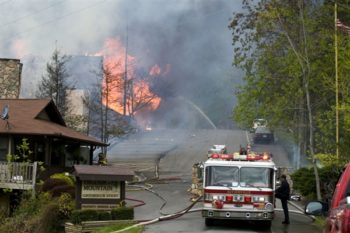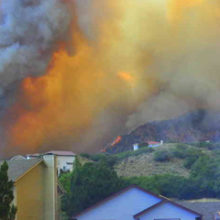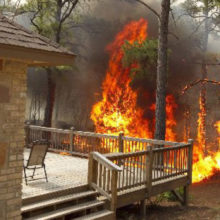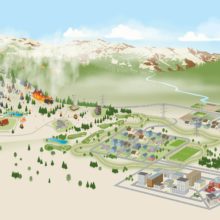In the aftermath of Tennessee’s recent wildfires, communities are coming to grips with the scale of devastation. Sweeping through the resort town of Gatlinburg, the “Chimney Tops 2” fire burned more than 2,400 structures, 18,000 acres, and killed 14 people in the surrounding area.
 Similar to their western counterparts, communities in Tennessee and other eastern states need to prepare for a future where wildfires are more frequent, burn longer, and are bigger. For wildfires: now is the time to plan for risks before they become disasters.
Similar to their western counterparts, communities in Tennessee and other eastern states need to prepare for a future where wildfires are more frequent, burn longer, and are bigger. For wildfires: now is the time to plan for risks before they become disasters.
The Gatlinburg fires have altered the way of life for many people living nearby. As one of the gateway communities to the Great Smoky Mountains National Park, Gatlinburg’s economy is largely driven by tourism and service-related industries, all of which were impacted by the temporary closure of the Park when the fires broke out.
The Great Smoky Mountains National Park is by far the most popular national park in the country. It receives more than 10 million visitors each year, greater than the number of people who visit Grand Canyon and Yosemite National Park combined.
Jobs in tourism-based industries, such as wholesale and retail trade, food services, accommodations, recreation, and other service-related sectors, are a significant portion of the Gatlinburg’s employment base, employing 58.9 percent of the local workforce.
Similar economic trends are seen throughout Sevier County where Gatlinburg is located. At the county scale, tourism-based industries employ more than 32,000 people, or roughly half of the 60,688 people working in Sevier County.
Jobs in other services-related industries, such as finance and insurance, real estate, health and education services, and professional and public administration, employ an additional 17,000 people, or 28 percent of the workforce.
Closure of the Great Smoky Mountains National Park had immediate economic impacts to Gatlinburg and the surrounding area. Hotels, shops, and restaurants emptied as more than 14,000 people evacuated the area. In the wake of the fire, 60 businesses were destroyed and 2,100 homes were burned.
The Mayor of Gatlinburg estimated the fire caused $500 million worth of damage to the town, not including the $7.5 million it cost to suppress the wildfires.
Despite the challenges, however, the residents of Gatlinburg and other nearby communities remain hopeful that visitors will return soon. The Great Smoky Mountains National Park has reopened and the downtown district of Gatlinburg was mostly unharmed.
Wildfires: Now Is the Time to Plan
Yet the Tennessee wildfires are an important warning about future wildfire events and other natural hazards. Perpetuated by drought and high winds, wildfires like the one that ravaged Gatlinburg are expected to increase in both severity and frequency.
Communities situated in high-risk areas should prepare for a future where wildfires are more common, dangerous, and bigger than before.
To this end, Headwaters Economics is partnering with Wildfire Planning International on a program that joins community land use planners with fire personnel to plan for wildfire risks.
The Community Planning Assistance for Wildfire (CPAW) is voluntary and at no cost to communities, providing them with technical assistance in the form of land use planning, forestry expertise, mapping, and science and research to integrate wildfire mitigation efforts into the development process.
Communities can apply now for a CPAW assistance grant to help reduce wildfire risk within the wildland-urban interface through improved land use planning.
Drawing off a national effort, the National Cohesive Wildland Fire Management Strategy, CPAW is helping communities in Colorado, Minnesota, Montana, New Mexico, Oregon, and Washington.
In the summer of 2017, CPAW will begin the process of accepting applications for a new round assistance to communities across the country.




